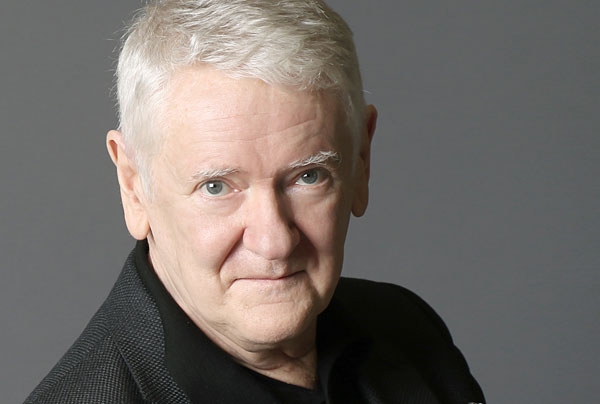NEWS
Forget About The Sound Of The Recording
February 11, 2022
Jim Anderson
 .
.
If I hadn't told you, you wouldn't have known when I wrote this essay—and you still don't know where I was when I wrote it: my office? In an airplane 36,000 feet up? Similarly, I don't know where you'll be when you read it, or when: Maybe in early 2022 in your listening chair; maybe you'll find it in a box in an attic many years hence and read it then.
What I'm getting at goes much deeper than the when and the where. It's also about the what: While we share a common language, the words I choose, alone and in combination, mean something slightly different to me than they do to you. And yet, when I write something, I want you to ignore the writing and absorb what it is that I'm saying. The analogy isn't perfect, but the relationship between reader and writer is much like the relationship between the listener and the recording engineer—and everyone involved in the recording, really, since recording music is a collaborative endeavor.
I should take a moment to introduce myself. I'm Jim Anderson, recording engineer and producer. I've been involved in audio, on the "pro" side, for many years. I say "audio" and not "music" because in addition to music of many genres, I've also recorded radio documentaries, film scores—even, I'm proud to say, the Muppets.
To me, Kind of Blue, the Miles Davis classic, could have been recorded last week, just as many recordings made today could have been made in 1959 when Kind of Blue was recorded. Kind of Blue is a perfect marriage of musicianship and technology, and in its many rereleases, both music and engineering stand up to scrutiny, thanks to the work of Columbia engineer Fred Plaut. There are plenty of other recordings like this, which don't tip you off as to when or where they were made. When you listen, what you hear is the music.
Of course, with Kind of Blue, there was a when and a where. The musicians entered Columbia's 30th Street studio on March 2 and April 22, 1959; they played together, and the total recording time was about 10 hours. The band was well-rehearsed, and the approach left room for enough spontaneity to keep the music fresh for more than 60 years.
Usually when we listen, we don't know much about a recording, unless we read about when or where it was made, or whether the musicians were together in the same room at the same time, or whether, instead, the music was overdubbed track by track in different locations on different dates. Some recordings don't even have a proper where or when.
Duke Ellington said, "There are simply two kinds of music, good music and the other kind. ... The only yardstick by which the result should be judged is simply that of how it sounds." Something like that could also be said about recordings of music—but who's to say what's good and what isn't? Baritone saxophonist Pepper Adams said in an interview that he worked very hard on a particular album—Live at Fat Tuesday's—which then received only two stars in DownBeat. It was my first Grammy-nominated recording.
Audiophiles (and others) toss words around to describe how recordings sound: transparent, vivid, balanced, dynamic, warm (but not too warm), whole, present, mellow, with plenty of air and depth. To the audio-aware reviewer, most of the words in that list correspond to sonic virtues (mellow could go either way), but what do they mean to a recording engineer? Not much. There is no "Mellow" knob or "Vivid" button on the recording console (although pro-audio devices that contain buttons and knobs labeled "Warmth" do exist—and leave it to the late Rupert Neve to put a "Silk/Texture" control on several products).
In the studio, we speak in precise, quantitative terms. Decibels and frequencies and milliseconds are the vocabulary I teach students in my critical listening classes at NYU's Clive Davis Institute of Recorded Music, along with some precise descriptive aural language. Sure, there's room in the studio for nebulous talk about "air" and "depth" and so on, especially when engineers speak to less technical folks (say, musicians and some producers), but if we want to get something done before the day ends, someone has to know how to turn a knob to change a level by X decibels at Y frequency, or set a delay at Z milliseconds or a reverb at K seconds with P predelay.
A good recording, like a good piece of writing, shouldn't draw attention to the work that went into it. If you enjoy thinking about recordings in terms of air and warmth and so on, there's no harm in it—but when I'm in the studio, my goal is to make you forget about that stuff. I don't want you thinking about my process, about how the sausage is made. I want my work to be transparent, although that word usually means something different to audio-savvy listeners than it does to me.
With my listener hat on, a great recording is one that, as I listen to it, I'm not aware of any recording technology. I don't want to listen to microphone placement, panning, reverb, compression, or equalization. I want to listen to music. My engineering success depends upon not letting you hear my struggles in the recording. I'd be happy if, in attempting to describe a recording's sound, you find yourself at a loss for words. My goal as a recording engineer is to disappear.
Read More:
https://www.stereophile.com/content/forget-about-sound-recording

 then "Add to Home Screen"
then "Add to Home Screen"